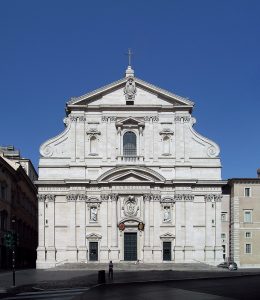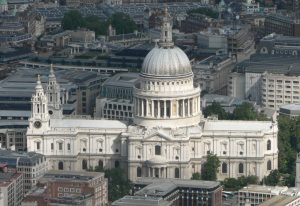Survey 3 Summary
1450-1750: The Age of Printing
This particular lecture was focused on the evolution of printing and typography in Europe and the changes it brought on in society and the world. We discussed the founding of the first printing company by Gutenberg’s former partner, Fust, and his associate Scheffoer. Together these men invented printing in more than one colour, and first introduced the colophon. Their success turned Germany into the centre of printing, but this was quick to end as political and religious unrest rose within the country and forced the printers to move their trade to Rome. Here came into existence the Roman and Greek inspired use of uncials and half uncials, called “batard”. From there, printing also spread to France, where Adobe Jenson created another font to be named after himself. With the rising success of the printing industry and the constant creation of new fonts and types, a need for punch cutters grew and the trade developed into an industry of its own. The printing and distribution of books led to the invention of copper plate cutting, which in turn allowed for illustrations to be more accurate and detailed. These illustrations were printed into textbooks of science and medicine as well as in religious books such as the Art of Dying. With this evolution came the rise of design as we now know it; layout, fonts, typeface and illustration became an important part of anything printed and written throughout the 16th to 18th century. The invention of printing revolutionized the world as we know it today, and the growth of the industry groomed Europe for the industrial revolution to come.

Italian Baroque Architecture: A Bit Excessive Maybe?
Baroque architecture first emerged in Italy during the late 16th-century. It took as a basis the Roman-influenced Renaissance architecture and grew into a theatrical style meant to express the triumph of the Catholic Church. Baroque architecture and art was a reaction on the part of the Catholic Church to the reformation that had begun with Martin Luther in Germany. New explorations of form, light and shadow, as well as dramatic intensity are all characteristics of this style. Gigantic proportions, big open central spaces, twisting columns, theatrical effects created with lighting, bronze, gilding, trompe-l’oeil (quadratura) effects and clusters of religious figures overhead were common in Italian Baroque spaces.
The Church of the Gesù: The Birth of Baroque
The Church of the Gesù is the mother church of the catholic religious order of the Jesuits. Located in the Piazza del Gesù in Rome, the church was completed in 1580 and was consecrated in 1584.
The facade of the Gesu, designed by Giacomo Della Porta, is known as “the first truly baroque façade”, and introduced the baroque style into architecture. The church served as model for innumerable Jesuit churches all over the world, especially in the Americas. Its paintings in the nave, crossing, and side chapels became models for Jesuit churches throughout Italy and Europe, as well as those of other orders.
“The façade of the church is divided into two sections. The lower section is divided by six pairs of pilasters with Corinthian capitals, while the upper section is divided with four pairs of pilasters. The upper section is joined to the lower section by a volute on each side. The main door stands under a curvilinear tympanum, while the two side doors are under a triangular tympanum. Above the main door one can see a shield with the letters IHS representing the Christogram. The façade also shows the papal coat of arms and a shield with the initialism SPQR, tying this church closely to the people of Rome.” (Wikipedia). Really didn’t know how to explain this otherwise, so I didn’t. Wikipedia did.

Northern European classical architecture: An Intro
The Northern European approach to classical architecture was predominantly neither Baroque or Rococo. Countries such as England, Holland, northern Germany and Scandinavia tended to keep to Renaissance and Palladian architectural themes, then later switched to Neoclassicism. Their style was less colourful than Italy’s Baroque style and France’s Rococo. With emphasis on orders based more directly on Roman rather than Greek traditions, the architecture of these northern countries was in many instances of high quality, well designed dignified and impressive. It was never as colourful, richly ornamental or breathtaking than the style of the south.
English Baroque Architecture: Is it really Baroque though?
The English baroque manner differed from that of the continent and the countries of the south in its clarity of design and subtle taste for classicism. It developed later than the baroque style which was influential in the mid-17th century in France and Italy. Sir Christopher Wren is the architect that really brought the english baroque style to life in the 53 churches he designed and constructed after the devastating Great Fire of London in 1666. These churches’ dynamic structure and multiple changing views are key baroque features.
London’s Anglican St Paul’s Cathedral (1675-1711) is the seat of the Bishop of London and the mother church of the Diocese of London. It was Wren’s most ambitious project and is now the second largest cathedral in England. The original church on this site, founded in AD 604, was also dedicated to St Paul the apostle and remained so through its reconstructions. The present cathedral was designed in the English Baroque style, and its majesty can be compared with some of the most magnificent domed churches in France and Italy.

Works Cited:
https://search-credoreference-com.ezproxy.capilanou.ca/content/entry/ebconcise/baroque_architecture/0
https://en.m.wikipedia.org/wiki/St_Paul%27s_Cathedral
https://en.m.wikipedia.org/wiki/Printing_press
https://en.m.wikipedia.org/wiki/English_Baroque
https://en.m.wikipedia.org/wiki/Baroque_architecture#Italy
https://en.m.wikipedia.org/wiki/Church_of_the_Ges%C3%B9
https://en.m.wikipedia.org/wiki/English_Renaissance#Architecture
https://en.m.wikipedia.org/wiki/Neoclassical_architecture
https://en.m.wikipedia.org/wiki/Renaissance_architecture#Mannerism_2
The Architecture of Europe by Doreen Yarwood